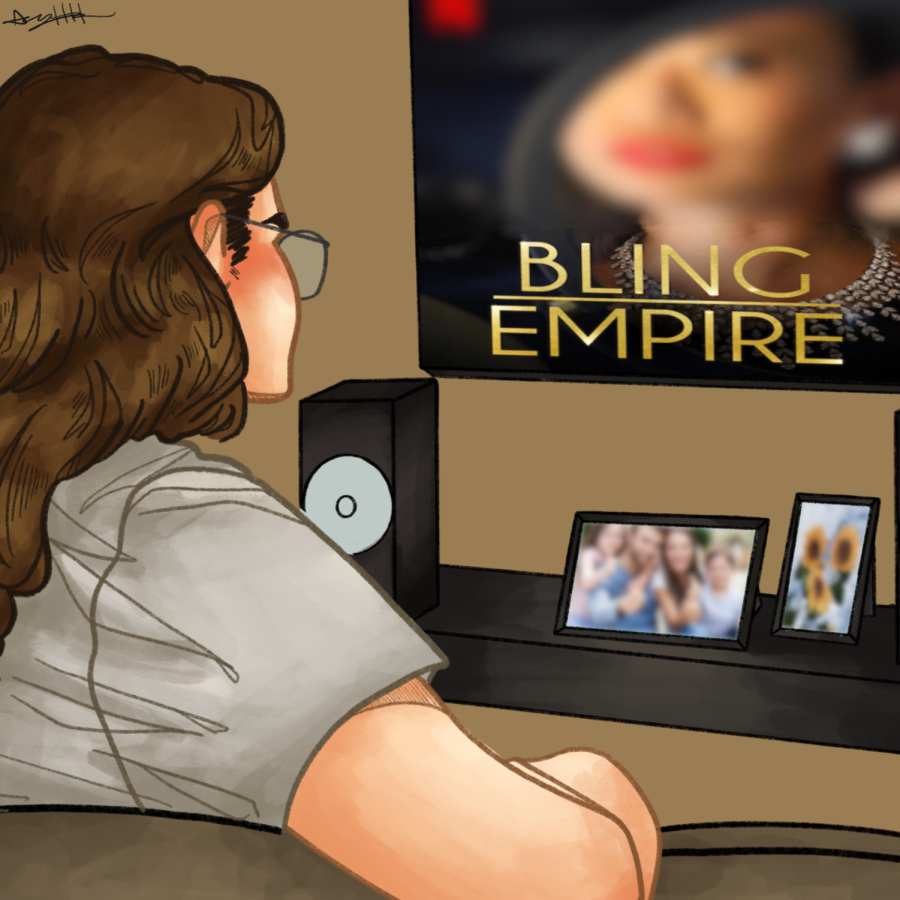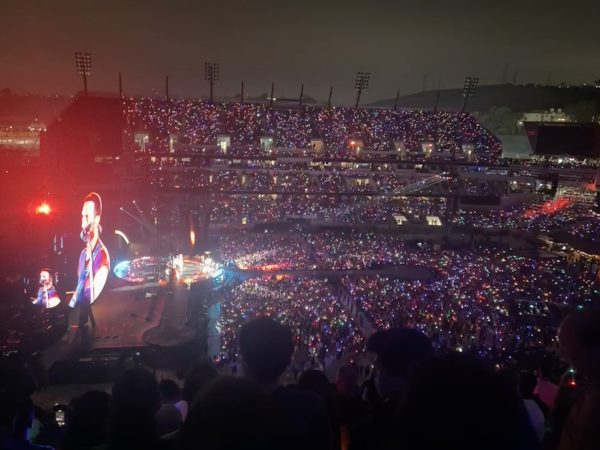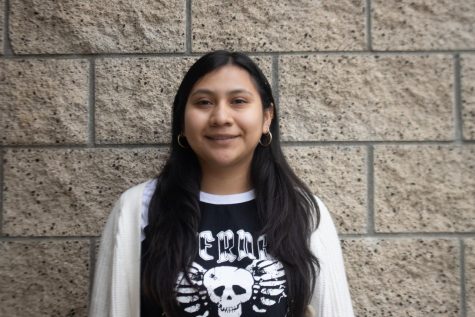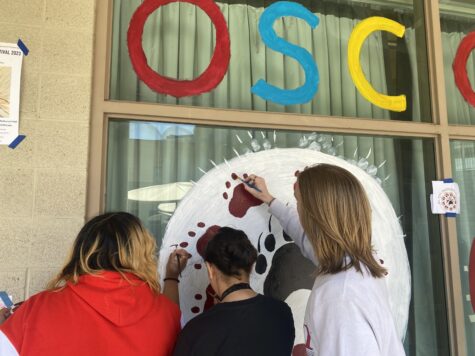Asian representation in media
The release of “Bling Empire” has fueled inaccurate stereotypes of Asian Americans.
Photo by Avery Huffer
Grab some popcorn to settle in and binge-watch “Bling Empire!”
The demand for Asian representation in media has been a rocky road for decades. But with the release of “Bling Empire” on Jan. 15, the debate becomes a matter of authenticity. The sheer elitism and privilege “Bling Empire” portrays only accounts for less than 1% of the Asian population, and the timing couldn’t be any worse.
“As an Asian American in the 21st century, one of the biggest stereotypes I come across in everyday life is the idea that ‘Asians are smarter than everyone’ or ‘Asians are good at math.’Although it may seem silly, I feel as though this mentality is harmful as it not only pressures Asian Americans to exceed expectations, but creates prejudice between people of other races. Ultimately, the well being and mental health of both parties are heavily impacted,” senior Alvin Mendoza said.
With the spread of COVID-19, America’s Asian population has undergone a series of racist and xenophobic attacks from the public, all in an effort to affix blame for the lethal and life-changing pandemic. The lavish lifestyles represented in the show are a far cry from America’s true state, with many Asian Americans still treading the edge of homelessness in some cases.
Although Netflix started filming the series in early 2019, the acute racial attacks calling COVID-19 the “Chinese virus” or “kung flu” counteract the show’s true purpose: to subvert Asian stereotypes. Instead, it reinforces the idea that Asians are wealthy and have not suffered from the pandemic.
“I often hear how wealthy Asian Americans typically are with them having the highest median income out of all racial demographics from white nationalists and the far right. They use this mere statistic to tell other minorities that they need to be more like Asians, who ‘work hard’ for their income— completely disregarding their struggles to achieve due to barriers of systemic racism. There are many scenarios where Asian Americans feel a need to fulfill such unrealistic expectations (being rich for instance) portrayed by movies and TV shows. If they fail to meet these expectations, they’re overwhelmed with feelings of self-doubt and utter shame,” senior Emily Luong said.
But not all Asian representations have negative connotations. After the release of “Crazy Rich Asians” in 2018, the all-Asian cast has paved a way to diversity in the billion dollar movie industry. The modern and semi relatable rom-com story creates a fairytale escape from money and shows the importance of being true to yourself.
“The media shouldn’t be telling people how ‘smart,’ ‘hardworking,’or ‘rich’ Asians are. They need to represent Asians that fit in diverse and non-stereotypical identities, such as Asians in the LGBTQIA+ community, the working class, etc,” Luong added.
Depictions of accurate scenarios in the media can create pride among Asians and provide a sense of understanding for people not in the Asian community. With the right portrayals and stories, the media can represent Asian Americans without falling back on harmful stereotypes.

(She/Her) Avery Huffer is a senior at Mission Hills High School, and this is her first year as a staff writer with the Silvertip. She hopes that during...











